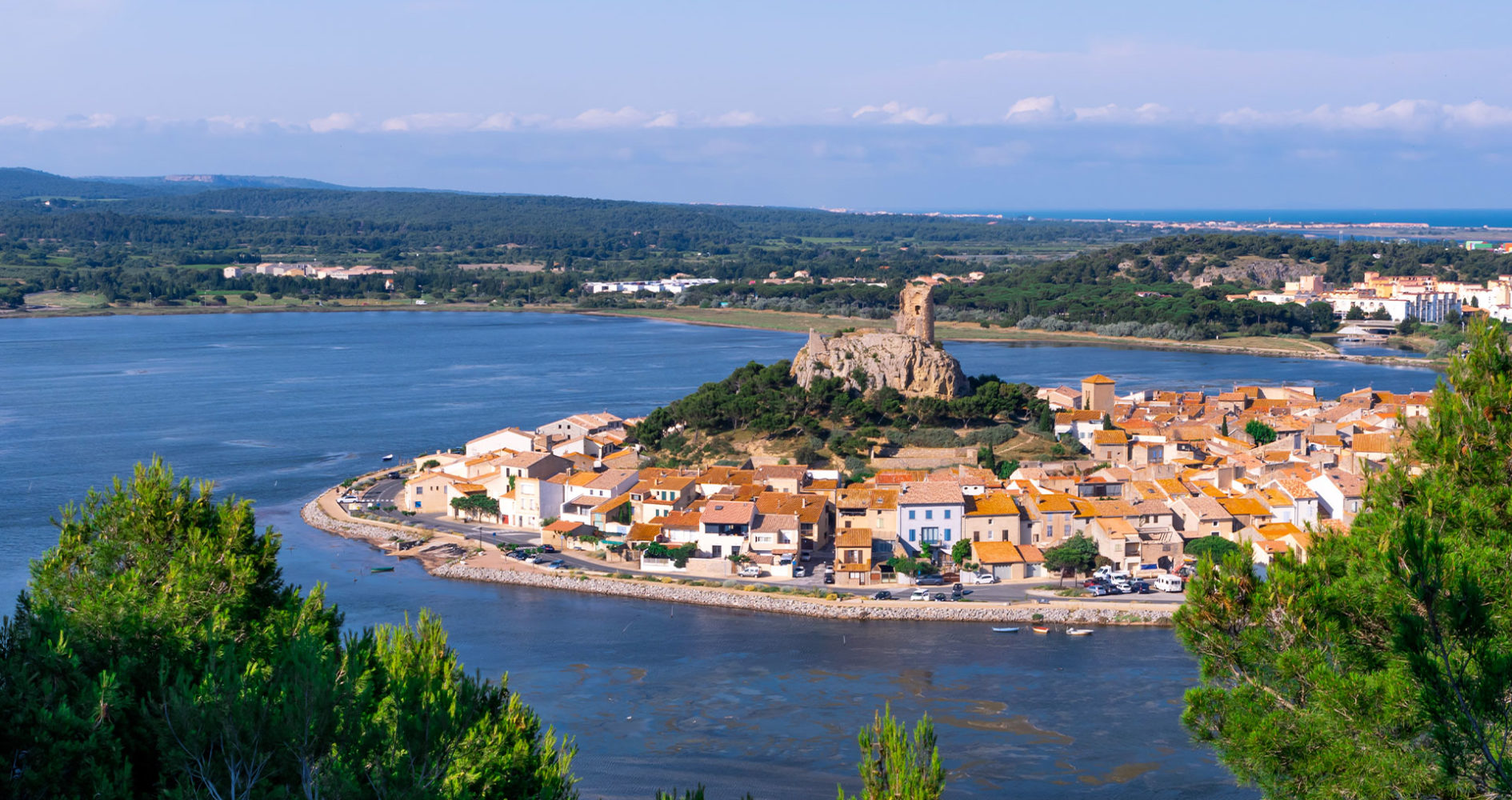What to do and visit
in Gruissan#Seaside getaway
Make the most of your camping vacation near Narbonne with a stopover in Gruissan, one of the most beautiful villages in the Aude. Nestled on the edge of the Gulf of Lion, between the Clape massif and the Mediterranean, this former fishing and wine-making village has become a pretty seaside resort much appreciated by holidaymakers, notably famous for its plage des chalets, its marina, its pink salt pans and its Tour Barberousse. Discovery.
The old village
and the Tour Barberousse#Southern Pearls
Wedged between the Etang de Gruissan and the Etang du Grazel, 40 km from our 3-star La Pinède campsite, Gruissan is one of the most beautiful villages in the South of France. This ancient village of fishermen and winegrowers is dotted with narrow “circulade” streets, where old houses, cafés, restaurants and boutiques mingle. A symbol of Gruissan, the Barbarossa Tower stands high above the town, a reminder of the village’s medieval past.
The remains of a fortified castle built between the 10th and 11th centuries, this tower once served as a watchtower for Narbonne’s maritime access, and as a refuge for the inhabitants during barbarian invasions. It owes its name to the Ottoman pirate Khizir Khayr ad-Dîn, known as “Barbarossa”. The castle tower offers a unique view of the village rooftops, harbor, coastline, pond and salt marshes.
At the foot of the medieval tower, the parish church of Notre-Dame-de-l’Assomption is one of Gruissan’s oldest buildings. It is famous for its vaulted ceiling in the shape of a ship’s hold. The setting is very atypical and rejuvenating. Don’t hesitate to stop by!
The beaches of Gruissan
During your camping holiday, the sun and sea will be waiting for you at Gruissan-Plage. Each one has its own personality. Right in the center of town, inside the marina, Grazel beach looks out directly onto Ile aux Oiseaux. La Vieille Nouvelle beach, or “La Vieille” as it’s known here, is a favorite with kitesurfers and naturists.
The Chalets beach will delight lovers of idleness and fine sand in a unique and picturesque setting. The wilder Mateille beach, a site classified by the Conservatoire du Littoral, is a must for windsurfers. The Ayguades beach is a pleasant seaside promenade stretching for several kilometers.
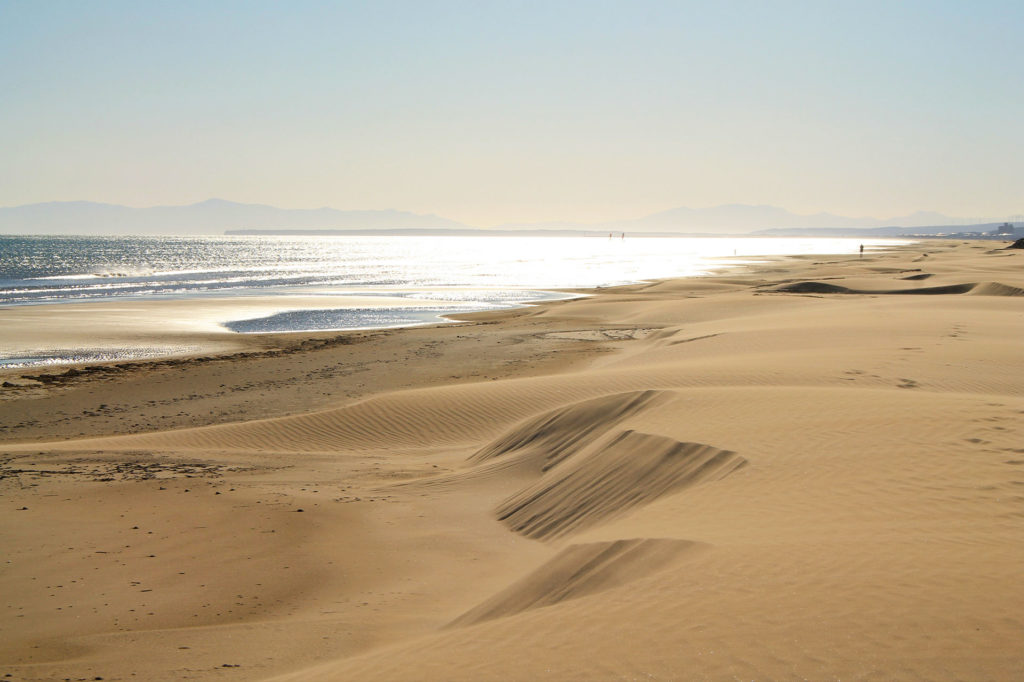
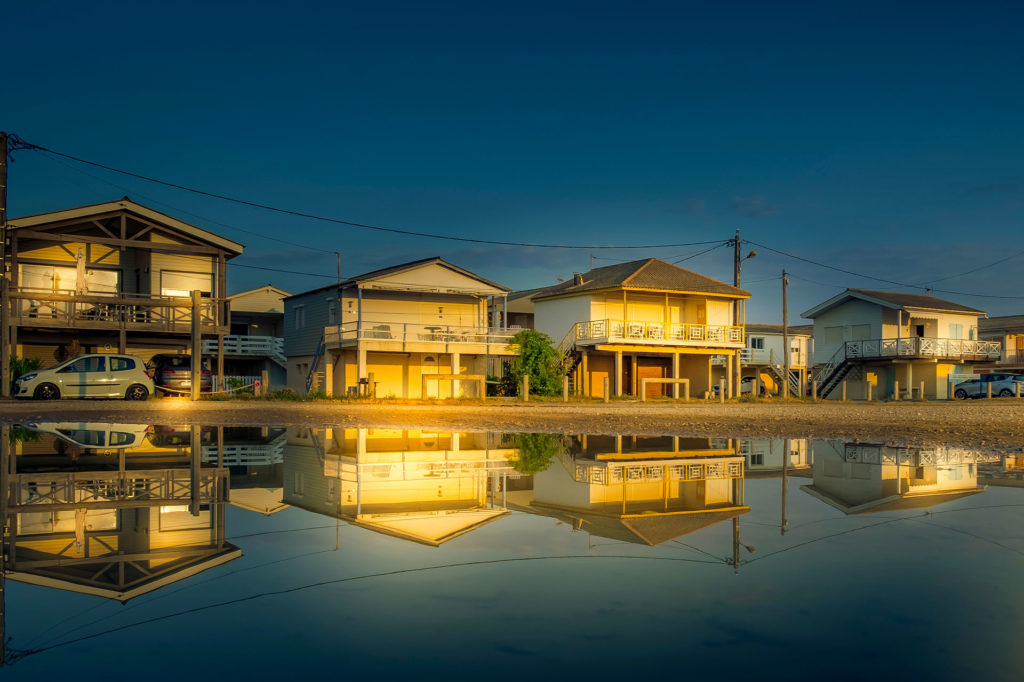
Les Chalets de Gruissan
Famous throughout the region, the chalets of Gruissan are a real curiosity! Made from bricks and mortar, the first cabins on stilts were built by the village’s merchants and winegrowers in the early 20th century. Today, it’s temporary residents who make it their little haven of peace by the beach. Did you know? The Chalets de Gruissan beach was the filming location for Jean-Jacques Beineix’s 1986 film “37.2° le matin”.
The port of gruissan
With its yacht clubs, yachting professionals, deep-sea fishing piers and promenade boats, Gruissan-Port attracts all sea lovers and water sports enthusiasts. The port of Gruissan is also a lively meeting place. Boaters and vacationers gather in the harbor district on the right bank to discover another facet of Gruissan, with its bars, restaurants and boutiques that liven up the pedestrian-only quays.
The chapel
Notre-Dame-des-Auzils#And the marine cemetery
On the heights of the Massif de la Clape, the chapel of Notre-Dame-des-Auzils rises proudly above the sea. It was built in 1080 by monks to welcome travelers crossing the Massif de la Clape.
The chapel, whose choir is built over the grotto of Saint-Salvaire, contains a whole range of model ships and ex-votos, some painted in trompe-l’oeil. From the 19th century onwards, cenotaphs (tombs without bodies) were erected along the Way of the Cross leading to the chapel. From the promontory, you can admire a splendid view from Mont Saint-Clair in Sète to the Canigou massif in the Pyrenees.
For sports enthusiasts, the Massif de la Clape also offers great opportunities for hiking, mountain biking or horseback riding through pine forests, garrigue and vineyards.
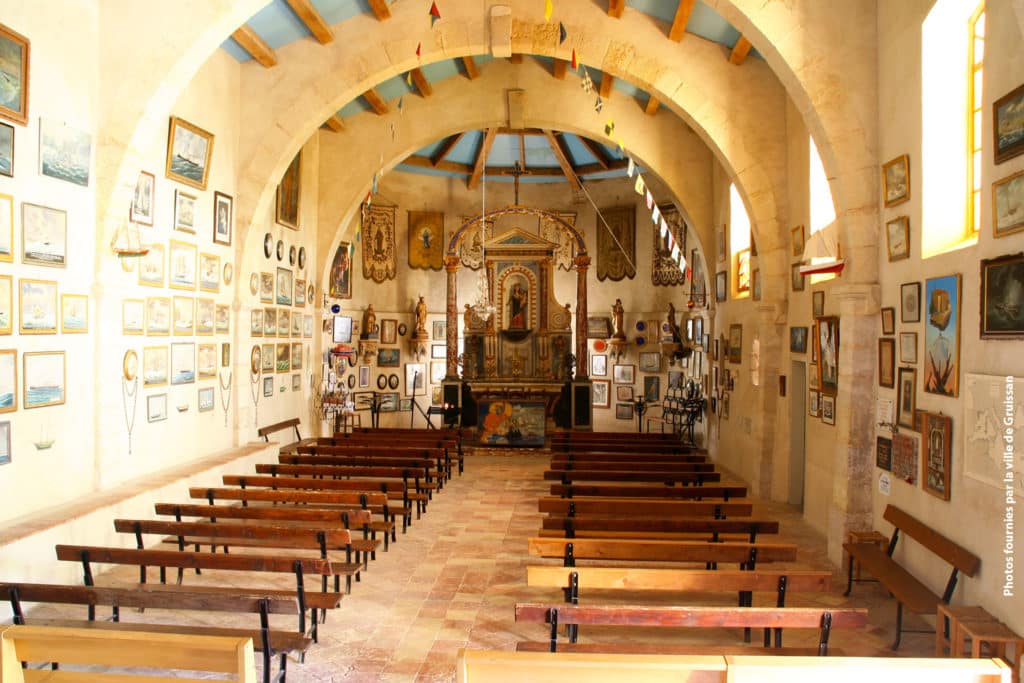
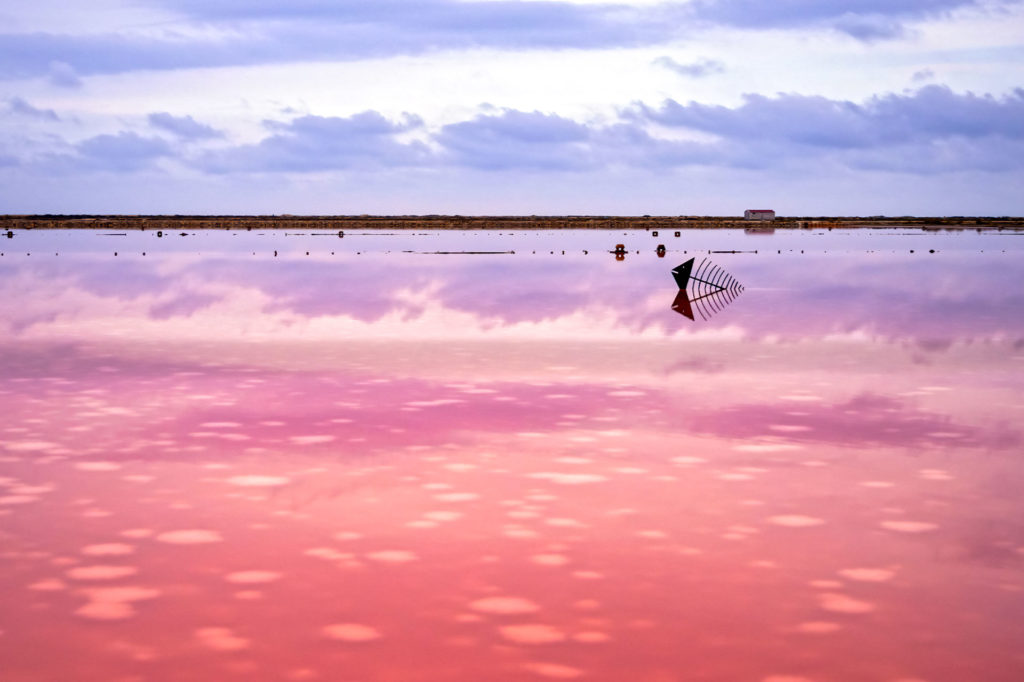
Le Salin de Gruissan
Situated between the Mediterranean and the Etang de l’Ayrolle, just outside the old village of Gruissan, the Ile Saint Martin salt marsh is renowned for its ecosystem and bird sanctuary. Guided tours allow you to discover the flora and fauna, and the salt workers who harvest salt using techniques inherited from the Middle Ages.
You’ll also discover why the Gruissans salt flats are pink! To find out more about the white gold of the Midi, visit the salt ecomuseum. Afterwards, a short detour to the Cambuse du Saunier will delight your taste buds.
Bonus: a magical view of the Gruissan salt marsh, where pink flamingos come to rest.


